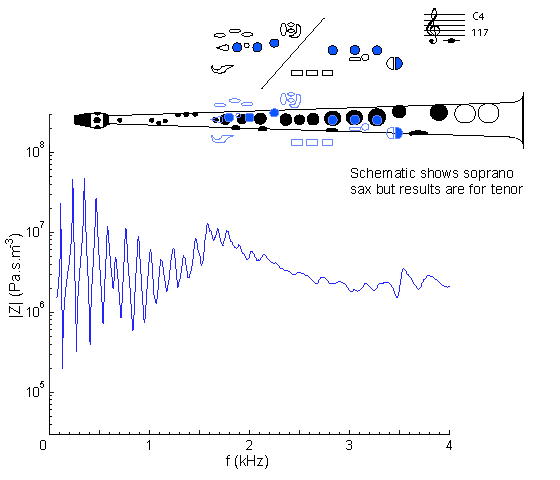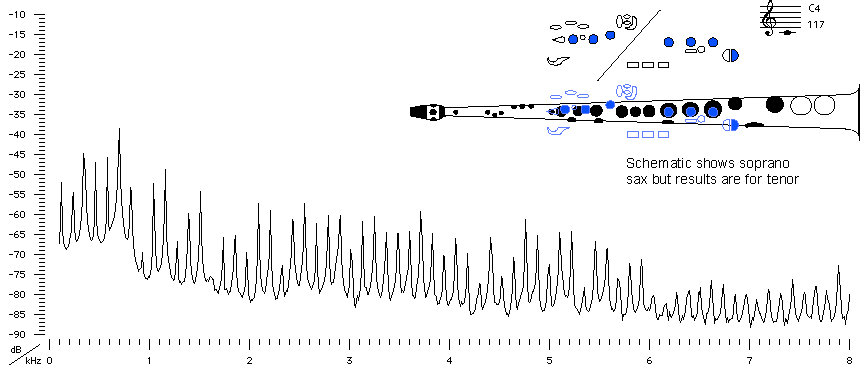| Acoustics of the saxophone |
Bb tenor saxophone |
C4 |

|
Fingering Acoustic schematic Non-specialist introduction
to acoustic impedance Notes are the written pitch. |
Compare with the impedance spectrum for a soprano sax on written C4: same fingering but sounding one octave higher.

Sound spectrum
of a Bb tenor saxophone
played using fingering for C4.
For more explanation, see
Introduction to saxophone acoustics.
|
Contact:
Joe Wolfe
/ J.Wolfe@unsw.edu.au |